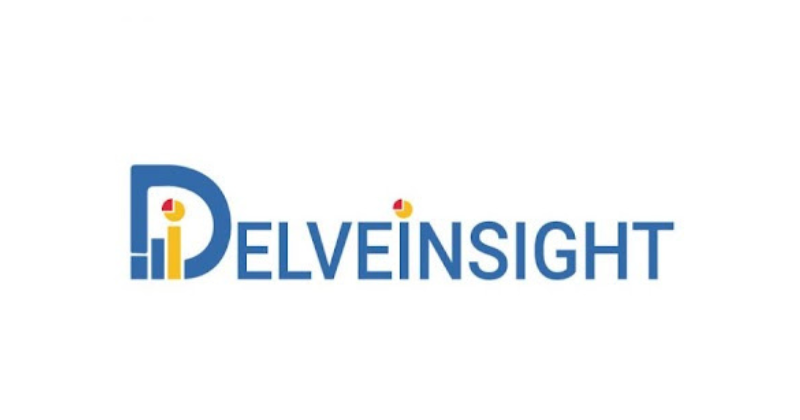DelveInsight’s PD-L1 Inhibitors Market Analysis highlights a USD 36 billion market across the 7MM, led by Merck’s KEYTRUDA and BMS’s OPDIVO. Other key players include Genentech, AstraZeneca, Regeneron, and Pfizer. The emerging pipeline features sasanlimab, HLX43, and balstilimab. Patent expirations in 2028 are expected to reshape the competitive landscape with biosimilar entry anticipated.
PD-(L)1 Inhibitors – Market Size, Target Population, Competitive Landscape & Market Forecast
PD-L1 Inhibitors Market Key Insights
Market Size Projection: DelveInsight estimates the PD-L1 inhibitors market across the 7MM to reach nearly USD 36 billion in 2023, with the United States representing the largest share (~USD 26 billion).
Patient Population: The total addressable patient pool spans multiple cancer types. In the US alone in 2023, approximately 200,000 incident NSCLC cases are eligible for PD-(L)1 inhibitors, alongside substantial populations in melanoma, cutaneous squamous cell carcinoma, triple-negative breast cancer (TNBC), and urothelial carcinoma.
Leading Companies: Key market players include Merck, Bristol Myers Squibb, Genentech, AstraZeneca, Regeneron, Pfizer, Novartis, Shanghai Henlius Biotech, Agenus, Arcus Biosciences, and others actively developing checkpoint inhibitors.
Pipeline Highlights: Promising pipeline assets include sasanlimab (Pfizer), HLX43 (Shanghai Henlius Biotech), balstilimab (Agenus), zimberelimab (Arcus Biosciences), spartalizumab (Novartis), and sugemalimab (EQRx/CStone Pharmaceuticals), spanning multiple clinical development phases.
Recent Developments:
- February 2025: Merck’s KEYTRUDA granted FDA priority review for head and neck squamous cell carcinoma (PDUFA: June 23, 2025).
- June 2025: AstraZeneca reports positive Phase III results for IMFINZI in gastric cancer.
- January 2025: Pfizer announces positive Phase III CREST trial outcomes for sasanlimab in bladder cancer.
- March 2025: Durvalumab (IMFINZI) gains expanded FDA approval for bladder cancer.
- June 2025: Pembrolizumab (KEYTRUDA) approved for perioperative treatment in resectable, locally advanced, PD-L1-positive head and neck squamous cell carcinoma (HNSCC).
Discover recent advancements in the PD-L1 Inhibitor landscape @ https://www.delveinsight.com/sample-request/pd-L1-inhibitors-market
PD-L1 Inhibitor Market Dynamics
PD-L1 inhibitors are among the most transformative segments in oncology, driven by the impact of immune checkpoint therapies. The current 7MM market (~USD 36 billion in 2023) reflects broad adoption as alternatives to chemotherapy, offering patients durable responses across multiple tumor types.
Clinical trial activity has tripled in recent years, with over 4,400 active trials, 90% of which focus on combination strategies. PD-L1 inhibitors are now applied both as monotherapy and as backbone treatments across diverse tumor types, including metastatic and early-stage cancers such as TNBC and NSCLC.
The therapeutic mechanism involves blocking PD-1/PD-L1 interactions, reactivating T-cell–mediated immune responses against tumors. Approved agents include PD-1 inhibitors (KEYTRUDA, OPDIVO, LIBTAYO) and PD-L1 inhibitors (TECENTRIQ, BAVENCIO, IMFINZI), showing strong efficacy with manageable toxicity.
Competitive Landscape: KEYTRUDA dominates the US, OPDIVO leads in Japan, while LIBTAYO specializes in non-melanoma skin cancers and TECENTRIQ in small-cell lung cancer. Patent expirations for KEYTRUDA and OPDIVO in 2028 will reshape the market and enable biosimilar competition.
Challenges & Opportunities: Key hurdles include identifying predictive biomarkers, managing immune-related adverse effects, and addressing high treatment costs. Opportunities exist in next-generation immune targets (LAG-3, TIGIT, TIM-3), combination therapies, and early-stage disease applications.
Download the PD-L1 Inhibitor Market report to understand which factors are driving the therapeutic market @ PD-L1 Inhibitor Market Trends.
PD-L1 Inhibitor Targeted Patient Pool
The PD-L1 inhibitor–eligible population across the 7MM spans diverse cancers. In the US:
- NSCLC: ~200,000 incident cases
- Melanoma: ~100,700 cases
- Cutaneous squamous cell carcinoma: ~1,207,400 cases
- TNBC: ~44,400 cases
- Urothelial carcinoma: ~86,300 cases
The analysis also covers head and neck cancer, colorectal cancer, hepatocellular carcinoma, renal cell carcinoma, small-cell lung cancer, biliary tract cancer, gastric cancer, and esophageal cancer. Geographic trends affect prevalence; for example, gastric cancer is more common in Asia (OPDIVO’s key Japanese indication), while NSCLC and melanoma predominate in the US, EU4, and UK.
Population growth is expected through 2034 due to expanding approvals, earlier-stage treatment applications, and increased diagnosis rates.
Discover evolving trends in the PD-L1 Inhibitor patient pool forecasts @ PD-L1 Inhibitor Potential Patient Pool Analysis.
Key Companies & Market Context
Ten checkpoint inhibitors are approved in the US (seven PD-1 and three PD-L1), including:
- KEYTRUDA (Merck) – approved since 2014, 20 indications
- OPDIVO (BMS/Ono) – approved 2014
- TECENTRIQ (Genentech) – 2016
- BAVENCIO (Merck KGaA) – 2017
- IMFINZI (AstraZeneca) – 2017
- Other PD-1 inhibitors: LIBTAYO, JEMPERLI, ZYNYZ, LOQTORZI, TEVIMBRA
Pipeline highlights:
- Pfizer: sasanlimab (Phase III CREST for bladder cancer)
- Shanghai Henlius Biotech: HLX43 (Phase II NSCLC)
- Agenus: balstilimab (Phase III gastric cancer)
- Arcus Biosciences: zimberelimab (Phase III NSCLC)
- Novartis: spartalizumab
- EQRx/CStone: sugemalimab
Market positioning is evolving from metastatic applications to early-stage disease and combination regimens with chemotherapy, targeted agents, and immunotherapies. KEYTRUDA remains broad-spectrum across NSCLC, melanoma, HNSCC, bladder cancer, and TNBC, while OPDIVO shows regional specialization, notably gastric cancer in Japan.
Recent milestones include Merck’s KEYTRUDA priority review for HNSCC, AstraZeneca’s IMFINZI Phase III success, Pfizer’s CREST trial outcomes for sasanlimab, and HLX43 progress at ASCO 2025. Patent expirations in 2028 will open doors for biosimilars and emerging checkpoint inhibitor developers.
Delve deeper into the major and specialised PD-L1 Inhibitor companies @ PD-L1 Inhibitor Competitive Landscape.
Conclusion
DelveInsight’s analysis indicates a PD-L1 inhibitors market at a pivotal transformation point. The $36 billion 2023 market is set for substantial growth through 2034. Patent expirations of KEYTRUDA and OPDIVO in 2028 will create opportunities for biosimilars and emerging competitors, while ongoing pipeline innovation and expanding patient populations across multiple cancer types position PD-L1 inhibitors for sustained market evolution.
About DelveInsight
DelveInsight is a leading market research and consulting firm specializing in disease-specific insights and therapeutic market analysis. Their reports integrate real-world data, clinical trial findings, and expert interviews to deliver comprehensive industry intelligence.
Media Contact
Company Name: DelveInsight Business Research LLP
Contact Person: Abhishek kumar
Email: info@delveinsight.com
Phone: +14699457679
Address: 304 S. Jones Blvd #2432
City: Las Vegas
State: Nevada
Country: United States
Website: https://www.delveinsight.com

